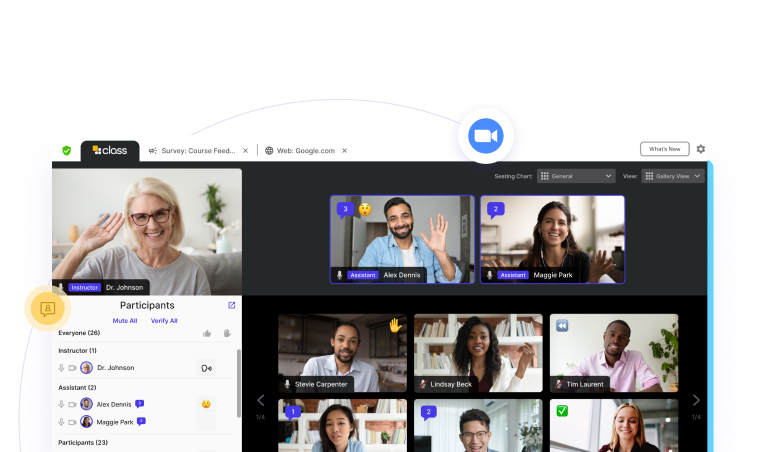
Daniel Hansen is an award-winning sales leader and VP of Corporate Sales at Class. He has a proven track record of building high-performing teams and attaining quotas in over 15 years of selling software. Prior to Class, he spent nine years in the virtual classroom space.

Daniel Hansen is an award-winning sales leader and VP of Corporate Sales at Class. He has a proven track record of building high-performing teams and attaining quotas in over 15 years of selling software. Prior to Class, he spent nine years in the virtual classroom space.

Onboarding is crucial for new hires. It’s when they form their first impressions of the company, its culture, and what their role in the organization will look like. Employees with a better onboarding experience are 2.6 times more likely to feel satisfied at work. And good onboarding is good for business, too, as organizations that are more active and effective in onboarding new hires enjoy 2.5 times greater revenue growth.
A strong first impression will go a long way in making sure new hires feel connected, confident, and ready to make an impact. But with remote work becoming more common, virtual onboarding presents some challenges. How do you create authentic connections when new hires are remote?
The answer starts with combining the right strategy with the right technology. A well-designed onboarding process paired with the right tools to support it can make virtual onboarding not only engaging, but also efficient and scalable.
Successful onboarding has a huge impact on employee engagement, retention, and productivity. To jump start success with a great first impression, use these three strategies:
Creating a good structure for your onboarding process is a key piece of the first impression puzzle. Start by making your processes easy to follow and intuitive. Provide a clear roadmap to your new hires so they know what to expect in the first week, month, and quarter. Create digestible, interactive modules instead of long-read text documents, and provide on-demand resources so employees can access what they need when they need it.
Remember the importance of social integration when you’re setting up your onboarding process. Buddy or mentor systems ensure new hires have someone they can go to for guidance, support, and informal questions. Facilitate introductions between cross-functional teams through virtual meetups so your new team members can connect with other colleagues who will be important to their role.
It’s essential to have an onboarding process that’s standardized and scalable. You need a program that helps you maintain consistency in important areas without sacrificing a personal touch. How do you do this?
Design repeatable onboarding workflows that are flexible enough to adapt to different roles. Use structured checklists and milestones to track progress and ensure no steps are overlooked. Facilitator guides are also key for enabling trainers to deliver uniform experiences across teams. These guides should document essential content and best practices to aid instructors in providing a comprehensive and engaging onboarding experience.
You’ll need to leverage the right technology to streamline and improve virtual onboarding processes. Here’s a short list of the type of tools you’ll need and how they’ll help you provide a more dynamic and personalized experience.
If you combine the right onboarding strategies with effective technology, you’ll set your new hires up for success from the beginning. Personalizing experiences, structuring your processes for clarity, and integrating social elements will encourage connection and confidence. Combining tech tools, like LMS, virtual classrooms, and gamified experiences, with the right strategy will help your organization build a stronger, more connected workforce for the future.
If you’re ready to start creating a memorable, engaging, and efficient onboarding experience, speak with a Class expert today.

Daniel Hansen is an award-winning sales leader and VP of Corporate Sales at Class. He has a proven track record of building high-performing teams and attaining quotas in over 15 years of selling software. Prior to Class, he spent nine years in the virtual classroom space.

Daniel Hansen is an award-winning sales leader and VP of Corporate Sales at Class. He has a proven track record of building high-performing teams and attaining quotas in over 15 years of selling software. Prior to Class, he spent nine years in the virtual classroom space.
Get our insights, tips, and best practices delivered to your inbox

Sign up for a product demo today to learn how Class’s virtual classroom powers digital transformation at your organization.

Features
Products
Integrations